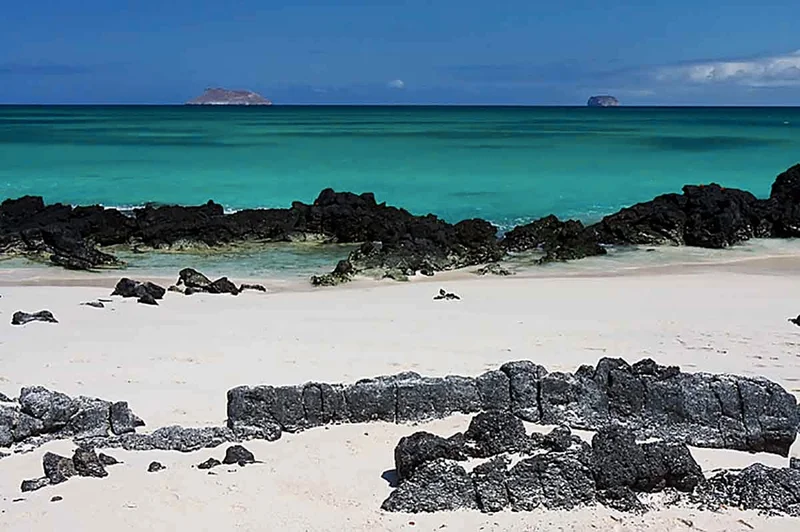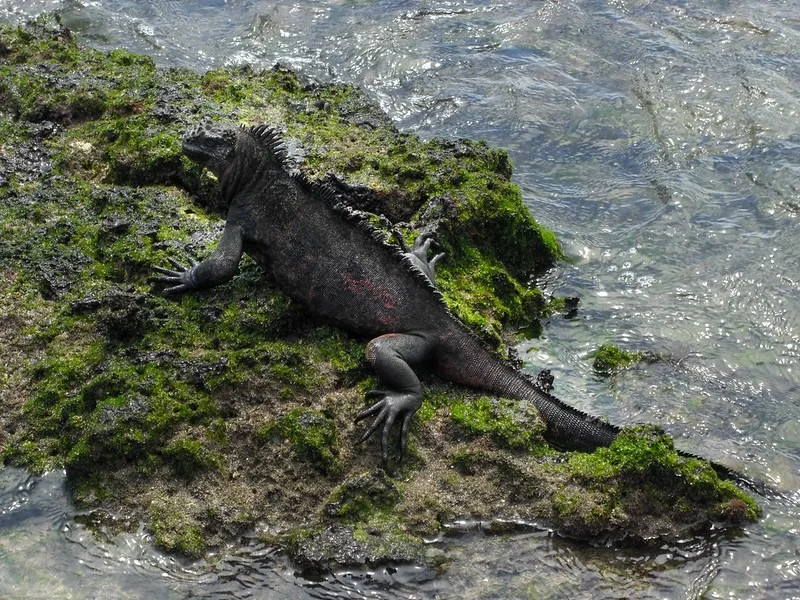

8 Day Galapagos Itinerary
Day 1: San Cristobal Island: Lobos Island
Fly to San Cristóbal Island. Meet the guide and transfer to the boat. In the afternoon, head to Isla Lobos known for its friendly sea lions.
Lobos Island
Explore this tiny island by foot and boat for some great wildlife encounters. Take a panga ride to view the sea and shore birds nesting and feeding. Spot a small colony of blue-footed boobies as well as two species of sea lions.
Day 2: Santa Fe Island & South Plaza Island
Visit Santa Fe island for a chance to mingle with the iguanas. Continue to South Plaza for some great bird watching opportunities.
Santa Fe Island
Visit Santa Fé for amazing wildlife watching opportunities. Hike towards the cliffs along the island's northern shore to view the forest of giant prickly pear cactus (Opuntia), which is home to endemic land iguanas. It is also one of the best locations to see sea turtles, sea lions, and maybe even get a glimpse of a whitetip reef shark from the panga.
South Plaza Island
Visit South Plaza, one of the smallest islands in the Galápagos, which has one of the largest populations of land iguanas. Walk along a path through a cactus forest and view a combination of dry and coastal vegetation on this lively island, home to a wide range of fauna, including incredible birdlife. Spot red-billed tropicbirds and indigenous swallow-tailed gulls resting on the cliffs, and sea lions playing in the waters.
Day 3: Santa Cruz Island :Charles Darwin Station & Highlands
In the morning, visit the Charles Darwin Research Center before and spend the afternoon in the highlands seeing giant tortoises in the wild and exploring lava tunnels.
Charles Darwin Research Station
Visit Fausto Llerena Breeding Center a great place to observe many species of tortoises and land iguanas in captivity. Brought back from the brink of extinction, see the famous Galápagos tortoise up close – a corral houses adult tortoises, and a nursery cares for the young until around age three when their shells have hardened.
This area also houses the Charles Darwin Research Station, a scientific organization initiated in 1964, which works to preserve the Galápagos' ecosystem through the conservation efforts of scientists, researchers, and volunteers. While the offices themselves are not open to visitors, the research station provides a study location for international scientists and environmental education for the local community.
Highlands
Head to Santa Cruz’s verdant highlands and the El Chato Reserve, a perfect place to see giant tortoises in their natural environment. Explore the reserve’s lagoon and lava tunnels, keeping an eye out for owls that often roost in the tunnels’ entrances.
Day 4: Isabela Island: Giant Tortoise Breeding Centre, Flamingo Lagoon & Wall of Tears
Stop off in the small town of Puerto Villamil before visiting the wall of tears built by prisoners after the Second World War. In the afternoon, visit the wetlands and the tortoise breeding centre in the Puerto Villamil area.
Giant Tortoise Breeding Centre
Walk through the town’s wetlands to visit the Giant Tortoise Breeding Centre. With the giant tortoise on its way to extinction in the late 1950s, this program was established to protect these noble creatures.
Flamingo Lagoon
Spend some time exploring Isabela's natural attractions. Enjoy a walk to the largest coastal lagoon in the Galápagos, also a principal breeding ground for flamingos. Make stops along the way at a lookout point, and to visit natural pools, beaches, and mangrove swamps.
Wall of Tears
Tour the sombre 'Wall of Tears', a historical site that pays homage to the prisoners of an on-island penal colony, who were forced to build a wall out of huge blocks of lava. Many prisoners died during the wall's construction between 1946 and 1959.
Day 5: Isabela Island & Fernandina Island
Pay a morning visit to Punta Moreno on the southwest coast of Isabela to see lava formations, flamingos, and amazing views of the three most active volcanoes in the Galápagos Islands. In the afternoon, visit Elizabeth Bay which offers amazing bird and marine life viewing opportunities. Head out on the pangas and explore the shallows and mangroves to look for sea turtles and penguins.
Punta Moreno
Visit Punta Moreno and explore its interesting landscape, which is home to black lava flows and a unique system of brackish lagoons that draw in a wide range of wildlife. Spot Darwin’s finches, Galápagos doves, penguins, and more! Be sure to bring your camera for shots of the island’s amazing scenery. Punta Moreno boasts a panoramic viewpoint of three of Isabela’s imposing volcanoes: Alcedo, Sierra Negra, and Cerro Azul.
Elizabeth Bay
Head out by panga to explore, keeping an eye out for wildlife hiding among the mangroves. Search for marine turtles, rays, and flightless cormorants in the sheltered waters. Also spot blue-footed boobies, penguins, and pelicans feeding on the abundant marine life.
Day 6: Isabela Island: Tagus Cove & Fernandina Island: Punta Espinoza
Stop for a visit at Tagus Cove and hike to a lookout to get a stunning view of the bay. Spot old graffiti on the cliffs from whalers and pirates who once visited the the cove. Continue to Punta Espinoza on Fernandina, the youngest of the Galápagos Islands. Witness the large colony of marine iguanas and a variety of bird life.
Isabela Island: Tagus Cove
Visit Tagus Cove, an Isabela Island anchorage site that was popular among whalers and pirates. Tour the area on foot for spectacular views of Darwin Lake (a spherical saltwater crater), the bay, and Darwin and Wolf volcanoes. Upon landing, take the wooden stairway to the trail entrance, and follow the trail through a dry vegetation zone. Continue on an ascent to a promontory made up of spatter cones (small volcanic cones).
Fernandina Island: Punta Espinoza
Tour a number of different trails at this not-to-be-missed landing site that’s home to some of the largest colonies of marine iguanas and sea birds. Follow the path along the beach and across lava flows for a unique opportunity to explore one of the least-visited areas of the Galápagos.
Day 7: Santiago Island: Puerto Egas & Rabida Island
Enjoy a morning excursion to Puerto Egas to see the salt crater as well as a dark sand beach and tidal pools. Take a refreshing dip in turquoise waters. Search for fish and sea turtles in the protected bay. Later, visit Rábida Island for a visit to a saltwater lagoon and sea lion colony.
Isla Santiago: Puerto Egas
Explore the spectacular shoreline of Puerto Egas, also known as James Bay. Spot a great number of shore birds and reptiles – the beach area is home to a plethora of wildlife.
Grab a snorkel and jump into the water right off the beach to explore Puerto Egas' interesting underwater world. Keep your eyes peeled for rays, turtles, and reefsharks while snorkelling. After, visit the large tidal pool area – marine iguanas and Sally Lightfoot crabs are everywhere.
Rábida Island
Arrive at a red sand beach at Rábida to explore its trails. A short trail leads to a saltwater lagoon; another trail goes past the lagoon to the interior, where the revered palo santo trees grow. (When burned, the branches of this tree give off a pleasing aroma and ward off mosquitoes.) Head back to the beach to see prehistoric-looking pelicans nesting among low-lying bushes – it's a rare treat to watch parent pelicans return with gullets full of fish for the squawking youngsters.
Day 8: North Seymour Island & Transfer out
Visit North Seymour for guided walks to observe birds and wildlife, including vast sea lion colonies. Disembark at Baltra and fly back to Quito.
Have an amazing wildlife experience visiting North Seymour Island – this island is teeming with life! Follow trails to see all the action (you may need to give way to a passing sea lion or marine iguana while walking). See blue-footed booby nests where mating pairs perform their courtship dance. Head to a rocky shore to see flocks of pelicans having lunch in a dive bomb feeding frenzy, then turn inland to a large nesting site of magnificent frigatebirds. These huge, dark acrobats have two-metre (6.5 ft) wingspans, and males, with their puffed-up scarlet throat sacks, sit precariously perched in low bushes to watch over their equally large chicks. Top off the excursion with a snorkel among sea lions and rays.

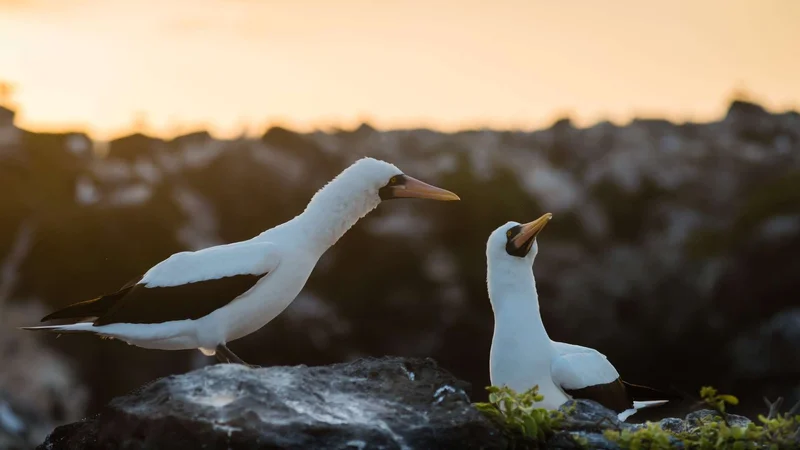



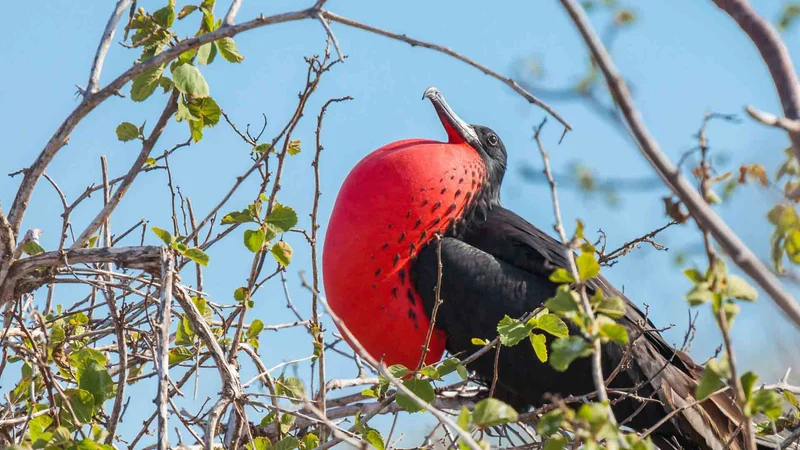
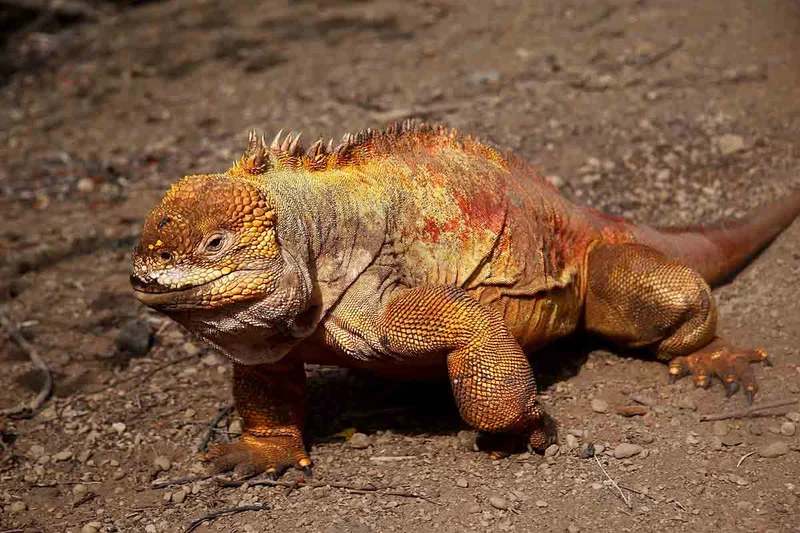
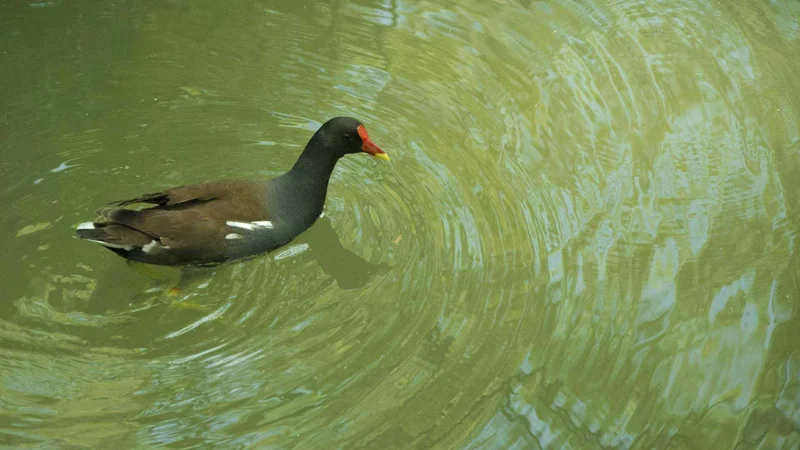

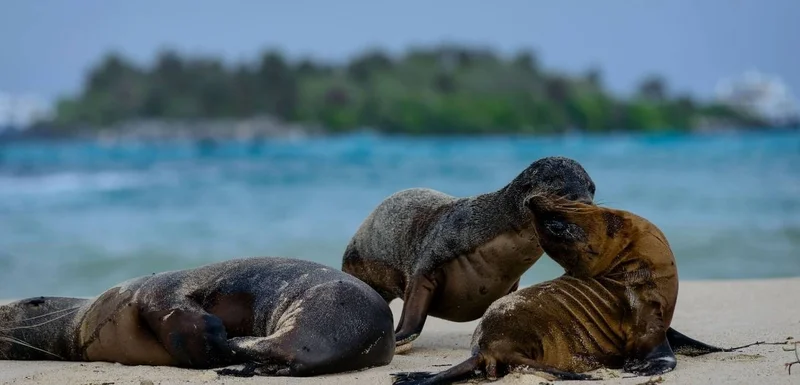


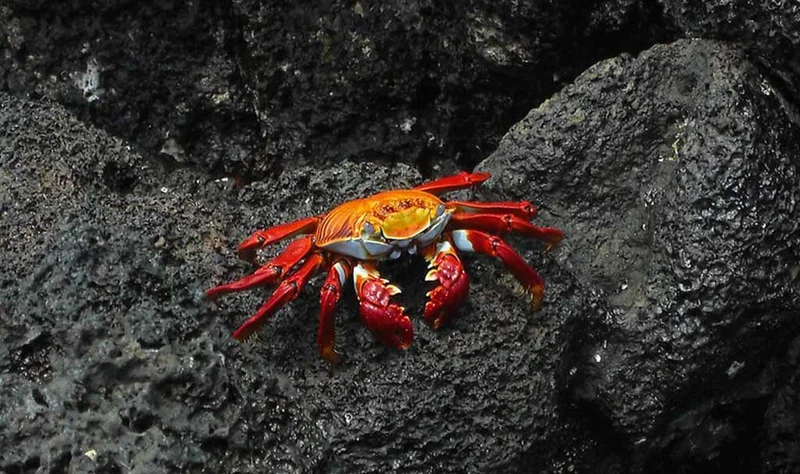
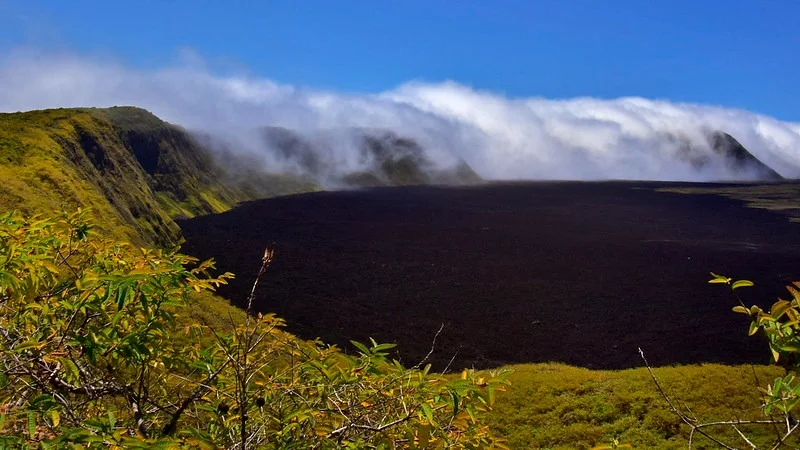

8 Day Galapagos Itinerary Includes
- All programed visits as per itinerary with specialized naturalist bilingual guide.
- Accommodation in twin/double cabin with private facilities (surcharge for suite).
- All meals on board, drinking purified water, coffee and tea.
- Snorkeling equipment (fins, mask & snorkel) & sea-kayaks.
- Transfers within the islands on cruise dates as per itinerary.
- Personalized 24/7 assistance during tour.
8 Day Galapagos Itinerary Does not Include
- Airfare to/from Galapagos from/to Mainland Ecuador (to be added).
- Galapagos National Park Entrance Fee USD 200 per person (in cash only upon arrival).
- Galapagos Migration Card US$20 in cash per person (at Mainland’s Airport).
- Alcoholic/soft drinks, personal expenses, extras, and tips.
- All sizes wet-suits for rent on board (in cash).
- Travel, medical & cancelation Insurance and any services on Mainland.
- Other services not specified in the program.
8 Day Galapagos Itinerary Highlights
- Look for three different species of Darwin’s Finches and the Albatrosses at Española.
- Snorkel with playful and curious sea-lions.
- Send a postcard to your friends and loved ones back home from Post Office Bay.
- Witness the magnificence of the waved Albatrosses at Española.
- Enjoy amazing views while sailing on board your Yacht from its ample sun-deck or the Jacuzzi.
Itinerary Map

Reviews
Animals you might see on this itinerary:
More information about the Galapagos Islands you visit in this 8 day itinerary:
Why travel with us?
Similar Itineraries
